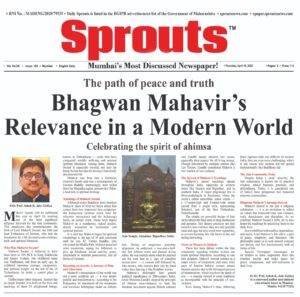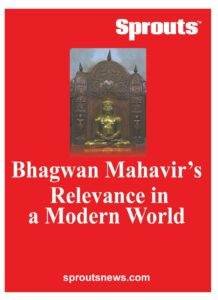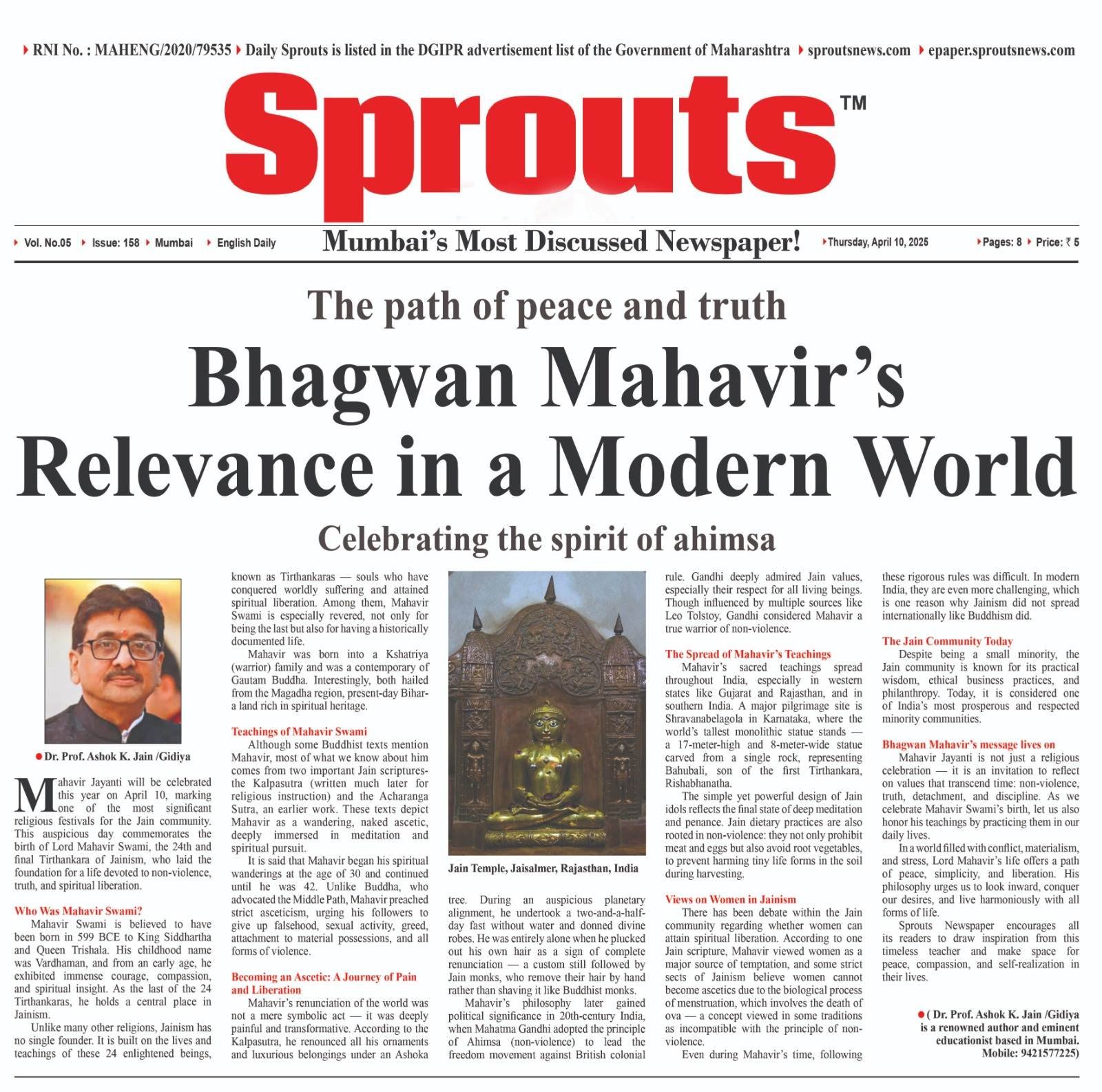
Contents
Bhagwan Mahavir’s Relevance in a Modern World
•The path of peace and truth
•Celebrating the spirit of ahimsa
Dr. Prof. Ashok K. Jain /Gidiya
Sprouts News Network
Mahavir Jayanti will be celebrated this year on April 10, marking one of the most significant religious festivals for the Jain community. This auspicious day commemorates the birth of Lord Mahavir Swami, the 24th and final Tirthankara of Jainism, who laid the foundation for a life devoted to non-violence, truth, and spiritual liberation.
• Who Was Mahavir Swami?
Mahavir Swami is believed to have been born in 599 BCE to King Siddhartha and Queen Trishala. His childhood name was Vardhaman, and from an early age, he exhibited immense courage, compassion, and spiritual insight. As the last of the 24 Tirthankaras, he holds a central place in Jainism.
Unlike many other religions, Jainism has no single founder. It is built on the lives and teachings of these 24 enlightened beings, known as Tirthankaras — souls who have conquered worldly suffering and attained spiritual liberation. Among them, Mahavir Swami is especially revered, not only for being the last but also for having a historically documented life.
Mahavir was born into a Kshatriya (warrior) family and was a contemporary of Gautam Buddha. Interestingly, both hailed from the Magadha region, present-day Bihar — a land rich in spiritual heritage.

• Teachings of Mahavir Swami
Although some Buddhist texts mention Mahavir, most of what we know about him comes from two important Jain scriptures — the Kalpasutra (written much later for religious instruction) and the Acharanga Sutra, an earlier work. These texts depict Mahavir as a wandering, naked ascetic, deeply immersed in meditation and spiritual pursuit.
It is said that Mahavir began his spiritual wanderings at the age of 30 and continued until he was 42. Unlike Buddha, who advocated the Middle Path, Mahavir preached strict asceticism, urging his followers to give up falsehood, sexual activity, greed, attachment to material possessions, and all forms of violence.
• Becoming an Ascetic: A Journey of Pain and Liberation
Mahavir’s renunciation of the world was not a mere symbolic act — it was deeply painful and transformative. According to the Kalpasutra, he renounced all his ornaments and luxurious belongings under an Ashoka tree. During an auspicious planetary alignment, he undertook a two-and-a-half-day fast without water and donned divine robes. He was entirely alone when he plucked out his own hair as a sign of complete renunciation — a custom still followed by Jain monks, who remove their hair by hand rather than shaving it like Buddhist monks.
Mahavir’s philosophy later gained political significance in 20th-century India, when Mahatma Gandhi adopted the principle of Ahimsa (non-violence) to lead the freedom movement against British colonial rule. Gandhi deeply admired Jain values, especially their respect for all living beings. Though influenced by multiple sources like Leo Tolstoy, Gandhi considered Mahavir a true warrior of non-violence.
• The Spread of Mahavir’s Teachings
Mahavir’s sacred teachings spread throughout India, especially in western states like Gujarat and Rajasthan, and in southern India. A major pilgrimage site is Shravanabelagola in Karnataka, where the world’s tallest monolithic statue stands — a 17-meter-high and 8-meter-wide statue carved from a single rock, representing Bahubali, son of the first Tirthankara, Rishabhanatha.
The simple yet powerful design of Jain idols reflects the final state of deep meditation and penance. Jain dietary practices are also rooted in non-violence: they not only prohibit meat and eggs but also avoid root vegetables, to prevent harming tiny life forms in the soil during harvesting.
Also Read: Sikandar: A Tale of Love, Loss & Ultimate Redemption
• Views on Women in Jainism
There has been debate within the Jain community regarding whether women can attain spiritual liberation. According to one Jain scripture, Mahavir viewed women as a major source of temptation, and some strict sects of Jainism believe women cannot become ascetics due to the biological process of menstruation, which involves the death of ova — a concept viewed in some traditions as incompatible with the principle of non-violence.
Even during Mahavir’s time, following these rigorous rules was difficult. In modern India, they are even more challenging, which is one reason why Jainism did not spread internationally like Buddhism did.
• The Jain Community Today
Despite being a small minority, the Jain community is known for its practical wisdom, ethical business practices, and philanthropy. Today, it is considered one of India’s most prosperous and respected minority communities.
• Bhagwan Mahavir’s message lives on
Mahavir Jayanti is not just a religious celebration — it is an invitation to reflect on values that transcend time: non-violence, truth, detachment, and discipline. As we celebrate Mahavir Swami’s birth, let us also honor his teachings by practicing them in our daily lives.
In a world filled with conflict, materialism, and stress, Lord Mahavir’s life offers a path of peace, simplicity, and liberation. His philosophy urges us to look inward, conquer our desires, and live harmoniously with all forms of life.
Sprouts Newspaper encourages all its readers to draw inspiration from this timeless teacher and make space for peace, compassion, and self-realization in their lives.
( Dr. Prof. Ashok K. Jain /Gidiya is a renowned author and eminent educationist based in Mumbai.
Mobile: 9421577225)
















